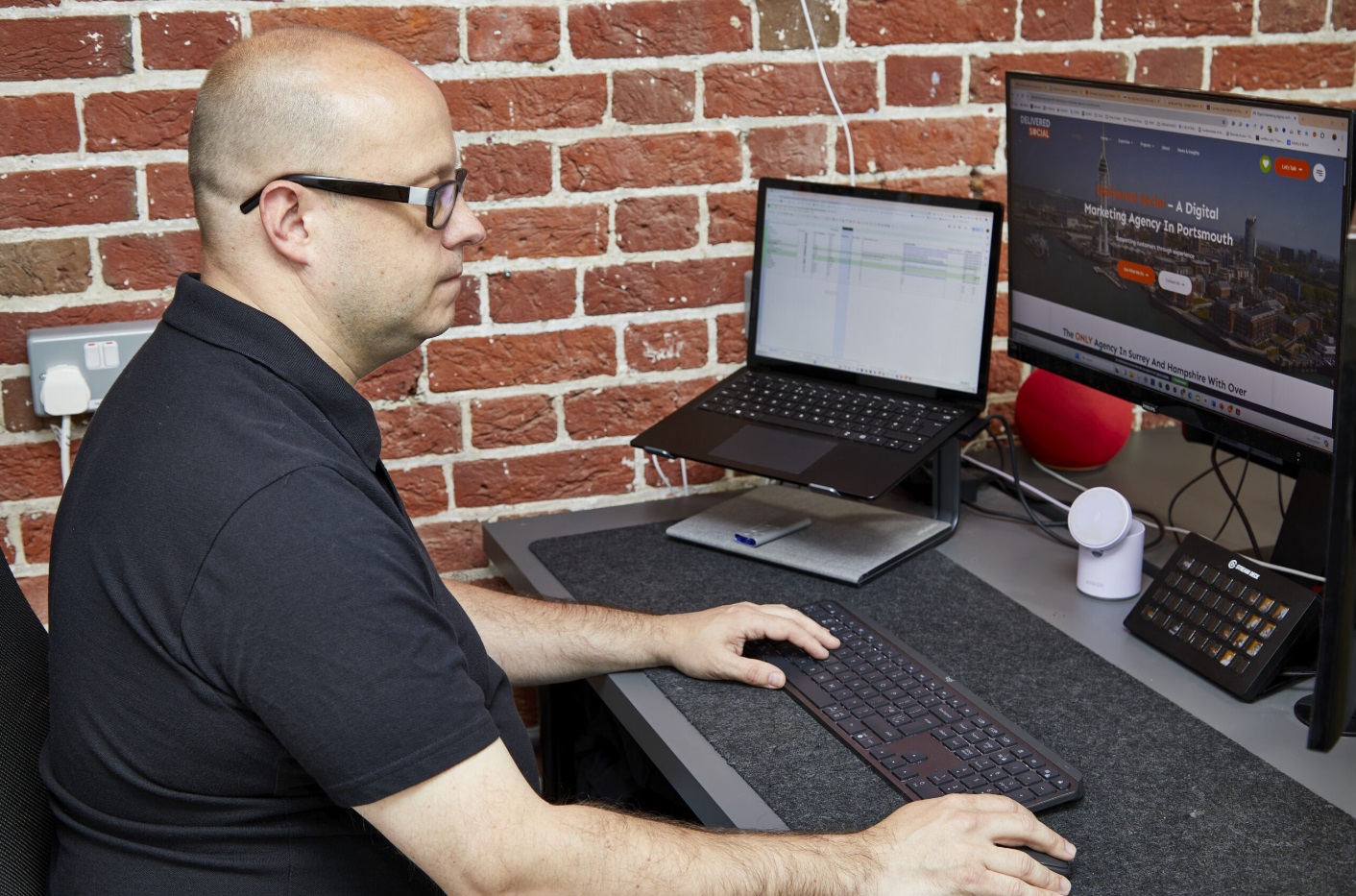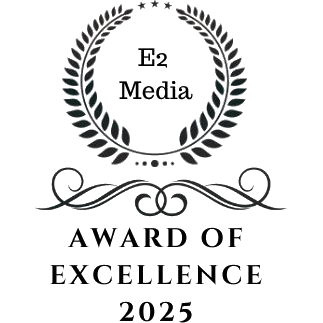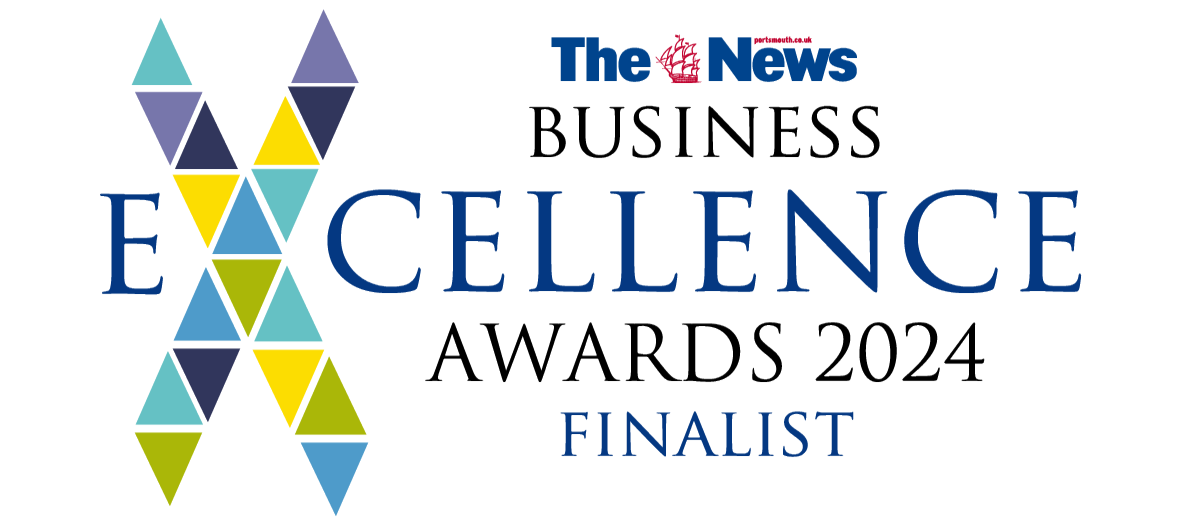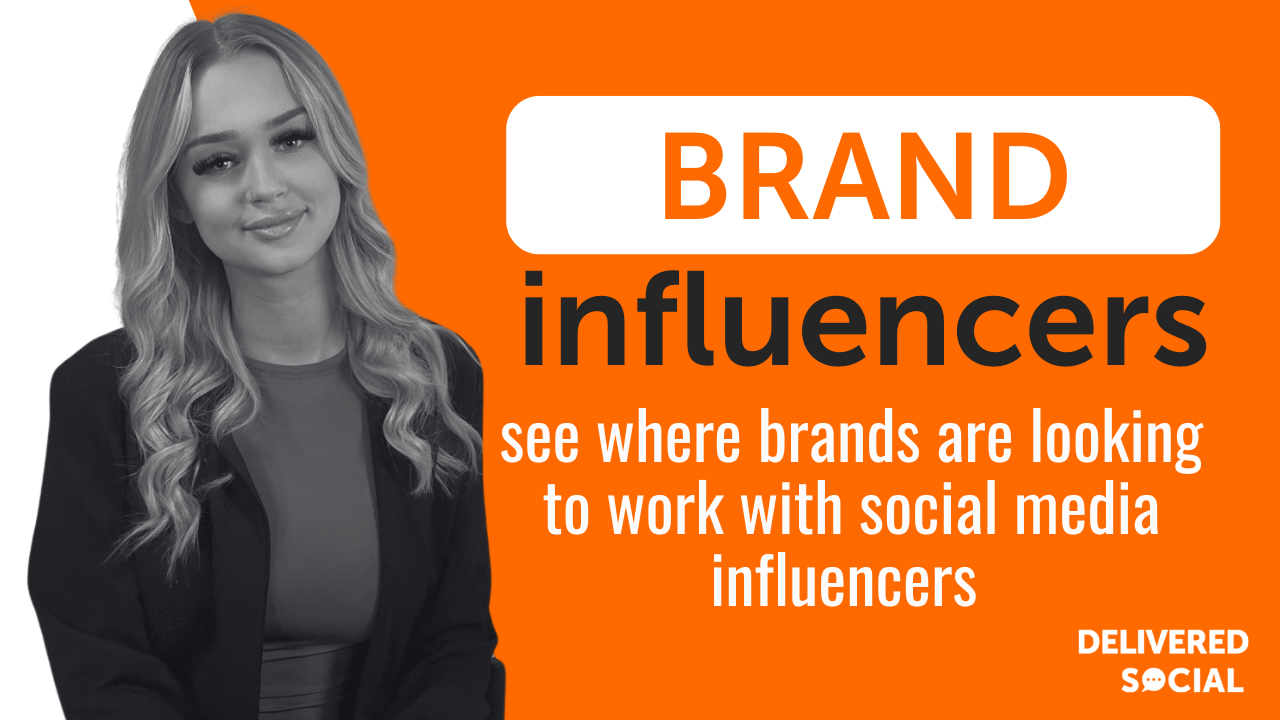
TikTok influencer vs Instagram influencer – which one are brands working with now? The answer depends on the type of content, audience engagement, and marketing goals. TikTok has taken the social media world by storm, offering brands a way to reach younger audiences through viral, fast-paced videos. Meanwhile, Instagram remains a strong platform for visually appealing content, influencer partnerships, and long-term brand collaborations.
Businesses today are choosing influencers based on what works best for their target audience. If a brand wants high engagement and trend-driven content, TikTok influencers are a great choice. However, for brands focused on aesthetics, lifestyle storytelling, and professional collaborations, Instagram influencers remain a strong option.
The decision isn’t always straightforward. Some brands now work with influencers on both platforms to maximise their reach, while others focus on just one. TikTok’s algorithm favours organic content, allowing brands to go viral quickly, while Instagram offers stable engagement with well-established influencer communities.
So, how do brands decide which influencers to work with? What are the key differences between TikTok and Instagram influencers, and which industries benefit most from each? In this article, we’ll explore the strengths and weaknesses of both platforms, look at real-world brand examples, and discuss what the future holds for influencer marketing.
By the end, you’ll have a clear understanding of how to choose the right influencer platform for your brand’s marketing success.
The Rise Of TikTok And Instagram in Influencer Marketing
Influencer marketing has transformed the way brands connect with audiences, and both TikTok influencers and Instagram influencers have played a major role in this shift. While Instagram has been the dominant force in influencer marketing for years, TikTok’s rapid rise has changed the landscape. Understanding how these platforms evolved helps brands decide which one aligns better with their marketing goals.
The Dominance of Instagram in Influencer Marketing
Instagram has long been the go-to platform for influencer marketing, allowing brands to collaborate with influencers through sponsored posts, stories, reels, and IGTV. Since its launch in 2010, Instagram has evolved into a polished, brand-friendly platform where influencers can create high-quality content to showcase products.
Businesses across fashion, beauty, travel, and fitness industries have leveraged Instagram’s highly visual nature to build strong influencer partnerships. Features like shoppable posts, affiliate links, and branded content tools have made it easier than ever for brands to track campaign success. However, as Instagram has matured, organic reach has declined due to increased competition and changing algorithms, making it harder for brands to stand out.
The Rapid Growth of TikTok for Influencer Marketing
TikTok emerged as a game-changer in the social media space, offering a fresh, fast-paced approach to content creation. Unlike Instagram’s carefully curated aesthetic, TikTok thrives on raw, engaging, and relatable videos. The platform’s algorithm favours viral content, meaning that even smaller influencers have the potential to reach millions of users overnight.
For brands, this presents an opportunity to engage with audiences in a more dynamic way. TikTok trends, challenges, and sound-based content allow businesses to create marketing campaigns that feel authentic and entertaining rather than overly promotional. Brands in industries like fashion, food, fitness, and technology have found massive success on TikTok, often by working with influencers who can create trend-driven content that resonates with younger audiences.
Why Are Brands Expanding to TikTok?
One of the main reasons businesses are shifting towards TikTok influencers is engagement. Studies show that TikTok’s engagement rate is significantly higher than Instagram’s, making it easier for brands to get their message across. Additionally, TikTok’s For You Page (FYP) gives brands an opportunity to reach new audiences quickly, unlike Instagram, where organic reach is often restricted.
However, Instagram still holds a strong position for brands that focus on building long-term relationships with influencers, showcasing visually appealing products, and targeting older audiences who prefer polished content.
Both Instagram and TikTok have their strengths, but brands are now recognising the power of short-form video content and shifting budgets accordingly. While Instagram still holds value, TikTok has become an essential platform for influencer marketing, particularly for brands looking to increase engagement and brand awareness quickly.
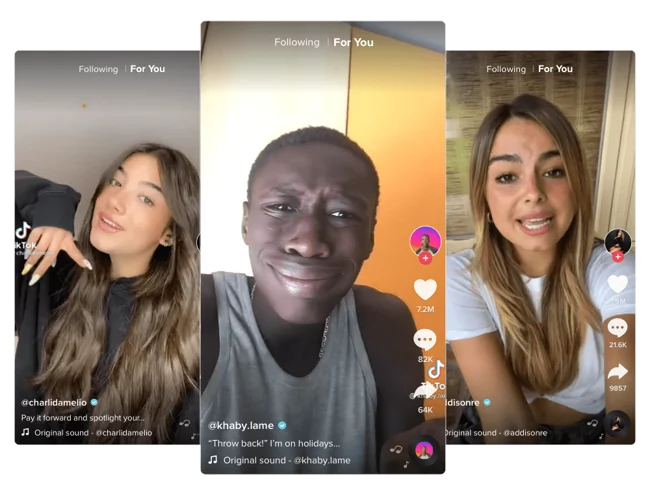
TikTok Influencer Vs Instagram Influencer: Strengths And Weaknesses
When comparing TikTok influencers vs Instagram influencers, it’s important to understand the unique strengths and weaknesses of each platform. Both offer businesses valuable opportunities, but the type of content, audience engagement, and overall effectiveness vary depending on the marketing goal. Let’s break down the pros and cons of working with influencers on both platforms.
TikTok Influencer Strengths
- Higher Engagement Rates: TikTok influencers tend to see stronger engagement than their Instagram counterparts. The platform’s For You Page (FYP) ensures that even smaller influencers can reach a massive audience if their content is engaging.
- Organic Growth Potential: Unlike Instagram, where brands often struggle with declining organic reach, TikTok allows content to go viral quickly. This makes it ideal for brands looking to generate rapid awareness through influencer partnerships.
- Authenticity and Relatability: TikTok’s unpolished and casual content style helps influencers come across as more relatable. This authenticity is why brands, especially in fashion, beauty, fitness, and food, are turning to TikTok for influencer marketing.
- Short-Form Video Popularity: With the rise of video content, TikTok is the leader in short-form, high-impact marketing. Consumers are increasingly watching quick, digestible videos rather than scrolling through static posts.
TikTok Influencer Weaknesses
- Less Established for E-Commerce: While TikTok is growing as a shopping platform, Instagram’s shoppable posts, affiliate links, and product tags still make it the stronger option for direct conversions.
- Fast-Paced Trends: TikTok trends shift quickly, meaning content has a shorter lifespan. Brands must keep up with trends and adjust their influencer strategies accordingly.
Instagram Influencer Strengths
- Stronger Brand Aesthetics: Instagram’s polished, curated content makes it perfect for high-end brands that want influencers to create visually appealing promotional posts.
- Better for Long-Term Partnerships: Brands often work with Instagram influencers on ongoing partnerships, building consistent brand recognition through sponsored posts, reels, and stories.
- Effective for E-Commerce and Direct Sales: Instagram’s built-in shopping features, like product tags and Instagram Checkout, allow influencers to directly drive purchases.
- Diverse Content Formats: With feed posts, reels, stories, and IGTV, Instagram influencers can showcase a brand in multiple ways, making it a versatile platform for different marketing needs.
Instagram Influencer Weaknesses
- Lower Engagement Rates Compared to TikTok: Organic reach on Instagram has decreased due to algorithm changes, making it harder for influencers to achieve the same engagement levels as TikTok.
- Slower Growth for New Influencers: While established influencers do well, it’s difficult for newer creators to build a following quickly, as Instagram prioritises existing accounts over fresh ones.
Both TikTok and Instagram influencers offer valuable opportunities, but the best choice depends on the campaign’s goal. TikTok influencers excel in high engagement and fast brand exposure, while Instagram influencers are better for aesthetic branding, direct sales, and long-term partnerships.
What Type Of Brands Work With TikTok Vs Instagram Influencers?
Choosing between a TikTok influencer vs Instagram influencer depends largely on the type of brand and the marketing objectives. Different industries benefit from each platform in unique ways, and understanding where your brand fits can help you maximise influencer partnerships.
Brands Thriving with TikTok Influencers
TikTok has changed the way brands approach influencer marketing. Its fast-paced nature and high engagement rates make it ideal for businesses that want to create viral content and connect with younger audiences.
- Fashion and Beauty Brands – TikTok is home to beauty tutorials, clothing hauls, and viral makeup challenges. Brands in the fashion and beauty sector benefit from the platform’s ability to turn products into trends almost overnight. Influencers showcase products in a fun and authentic way, leading to quick sales spikes.
- Food and Beverage Companies – The platform is packed with cooking hacks, recipe videos, and food challenges that get massive engagement. Brands that sell food products, drinks, or kitchen appliances can see quick success through creative influencer campaigns.
- Fitness and Health Brands – TikTok is full of workout routines, transformation videos, and health trends. Influencers in this space can promote fitness gear, supplements, or online coaching services effectively through short, engaging content.
- Entertainment and Tech Brands – Gaming, streaming services, and tech gadgets perform well on TikTok. Influencers create content that highlights features, benefits, and real-time product experiences, making it a great fit for brands in this industry.
- Startups and Challenger Brands – Many newer brands choose TikTok because it offers cost-effective marketing. A single viral video can introduce a brand to millions of people without requiring a huge advertising budget.
Brands That Prefer Instagram Influencers
Instagram remains the top choice for brands that focus on long-term branding, high-quality visuals, and direct product sales.
- Luxury and High-End Brands – Instagram’s aesthetic appeal makes it the perfect platform for luxury fashion, jewellery, watches, and designer goods. These brands rely on polished, aspirational content that aligns with Instagram’s visual nature.
- Travel and Hospitality – Hotels, resorts, airlines, and travel agencies benefit from Instagram’s ability to showcase scenic destinations. Travel influencers use Instagram’s features like Stories, Reels, and carousel posts to share immersive experiences.
- Home Décor and Lifestyle Brands – Instagram’s curated feed allows brands in this space to showcase interior design, home products, and lifestyle aesthetics that fit the platform’s clean and stylish aesthetic.
- E-Commerce and Retail Brands – Instagram’s shoppable posts and direct checkout options make it the better platform for brands looking to drive sales. Customers can discover, browse, and purchase products without leaving the app.
- Personal Brands and Coaches – Business coaches, consultants, and personal brands tend to perform better on Instagram. The platform allows for more storytelling, trust-building, and community engagement through long-form captions and professional imagery.
Both TikTok and Instagram offer brands unique advantages, but the choice comes down to the marketing objective. If the goal is to create fast-paced, engaging content with high virality, TikTok influencers are the best choice. For brands focused on polished aesthetics, long-term relationships, and direct product sales, Instagram influencers remain the stronger option.
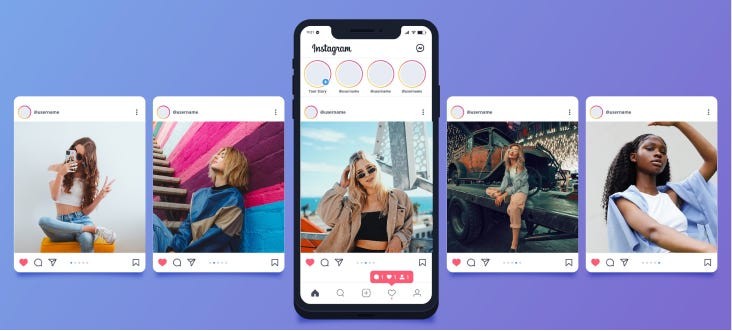
The Future of Influencer Marketing: Is One Platform Winning?
The debate between TikTok influencer vs Instagram influencer has intensified as brands continue to shift their marketing strategies. Both platforms have evolved significantly, and influencer marketing is now a multi-billion-pound industry. But looking ahead, is one platform set to dominate, or will brands continue to use both?
TikTok’s Rapid Growth and Future Potential
TikTok has seen explosive growth, particularly among younger audiences. Its algorithm-driven content discovery makes it easier for brands and influencers to go viral. As a result, many businesses are increasing their investment in TikTok marketing.
- Increased Advertising Opportunities: TikTok has introduced more advertising features, such as TikTok Shop and Spark Ads, making it easier for brands to turn influencer content into paid promotions.
- Short-Form Video Is Here to Stay: Consumer attention spans are getting shorter, and TikTok’s bite-sized content format perfectly matches this trend. As more users prefer quick, engaging content, brands are likely to continue prioritising TikTok.
- Authenticity Over Perfection: TikTok has shifted influencer marketing away from the polished, high-production style seen on Instagram. Brands are embracing influencers who create natural, relatable content rather than highly curated promotional posts.
Despite TikTok’s advantages, some brands are still hesitant to commit fully. The platform’s young audience base means businesses targeting older demographics may still prefer Instagram.
Instagram’s Adaptation and Ongoing Strengths
Instagram remains a dominant player in the influencer marketing space, adapting to new trends to stay competitive. Features like Reels, Stories, and Shopping have helped Instagram maintain its relevance, even as TikTok grows.
- Instagram’s Shopping Capabilities: Unlike TikTok, Instagram has fully integrated e-commerce features. Shoppable posts, product tags, and Instagram Checkout make it easy for brands to drive direct sales from influencer content.
- Established Influencer Ecosystem: Instagram influencers have spent years building highly engaged communities. Brands that focus on long-term collaborations prefer Instagram for its stability and established influencer culture.
- Multi-Format Content Options: Instagram allows influencers to use a mix of static images, videos, live streams, and stories, offering brands more flexibility in content creation.
Instagram continues to evolve, but its biggest challenge is maintaining high engagement levels. The platform’s algorithm changes have made organic reach harder to achieve, leading some brands to invest more in TikTok where content can go viral more easily.
Both TikTok and Instagram will remain key players in influencer marketing. TikTok is leading in engagement and viral content, while Instagram is stronger for direct sales and professional branding. The future likely involves a mix of both, as brands adjust their strategies to maximise their reach across different platforms.
Choosing The Right Influencer For Your Brand
When it comes to TikTok influencer vs Instagram influencer, the right choice depends on your brand’s goals, target audience, and marketing strategy. Both platforms offer unique advantages, and businesses must decide which one aligns best with their objectives.
If your brand thrives on high engagement, viral trends, and youthful audiences, TikTok is the clear winner. With its fast-paced content and powerful algorithm, brands can gain massive exposure in a short amount of time. TikTok influencers bring authenticity and a fresh approach to marketing, making it a great platform for businesses that want to tap into younger demographics.
On the other hand, Instagram remains a strong choice for brands that prioritise aesthetics, long-term partnerships, and direct sales. With features like shoppable posts, Instagram Checkout, and high-quality storytelling, Instagram influencers continue to play a crucial role in digital marketing strategies.
The smartest approach? Many brands are now working with influencers on both platforms to maximise their reach and effectiveness. By leveraging the strengths of both TikTok and Instagram, businesses can create well-rounded campaigns that engage different types of audiences.
If you’re looking to build a winning influencer marketing strategy, now is the time to get expert guidance. At Delivered Social, we help brands connect with the right influencers and create powerful campaigns that drive real results.
Interested In Working Together?
Introducing Delivered Social. We’re The Most-Rated Digital Agency In Surrey & Hampshire – We’ve Got To Be Doing Something Right.
Delivered Social is a digital marketing agency with one mission—to help businesses grow. We’re famous in Guildford and Portsmouth for our social clinics. We believe in free advice. We build lasting relationships because our team prides itself on being helpful, which our clients appreciate.
If you are looking for a new website or an agency to manage your social media presence, we can help.
If you need something slightly different, here's a super handy list of all our services, or you can always email us.


